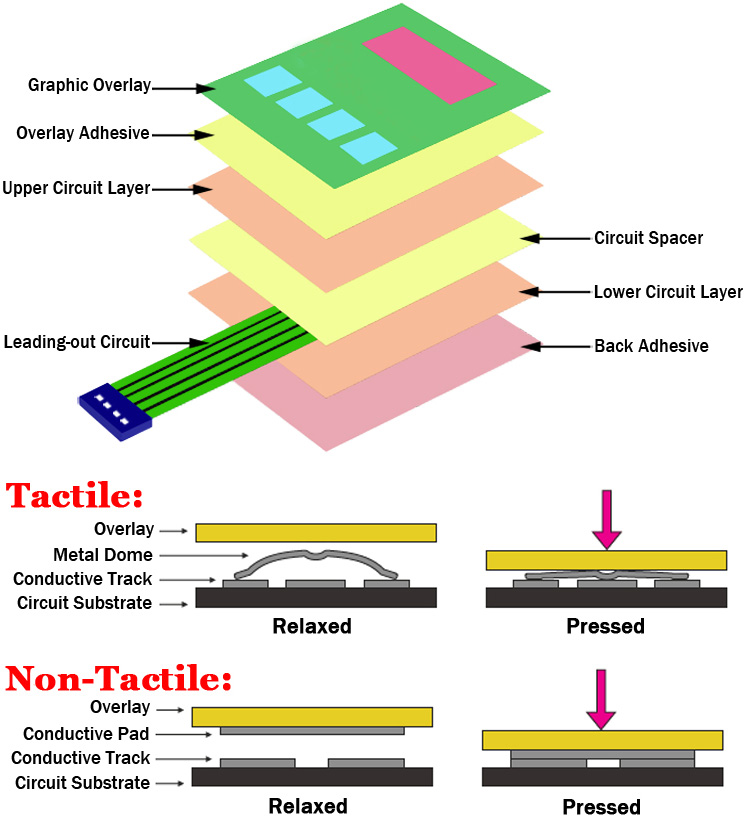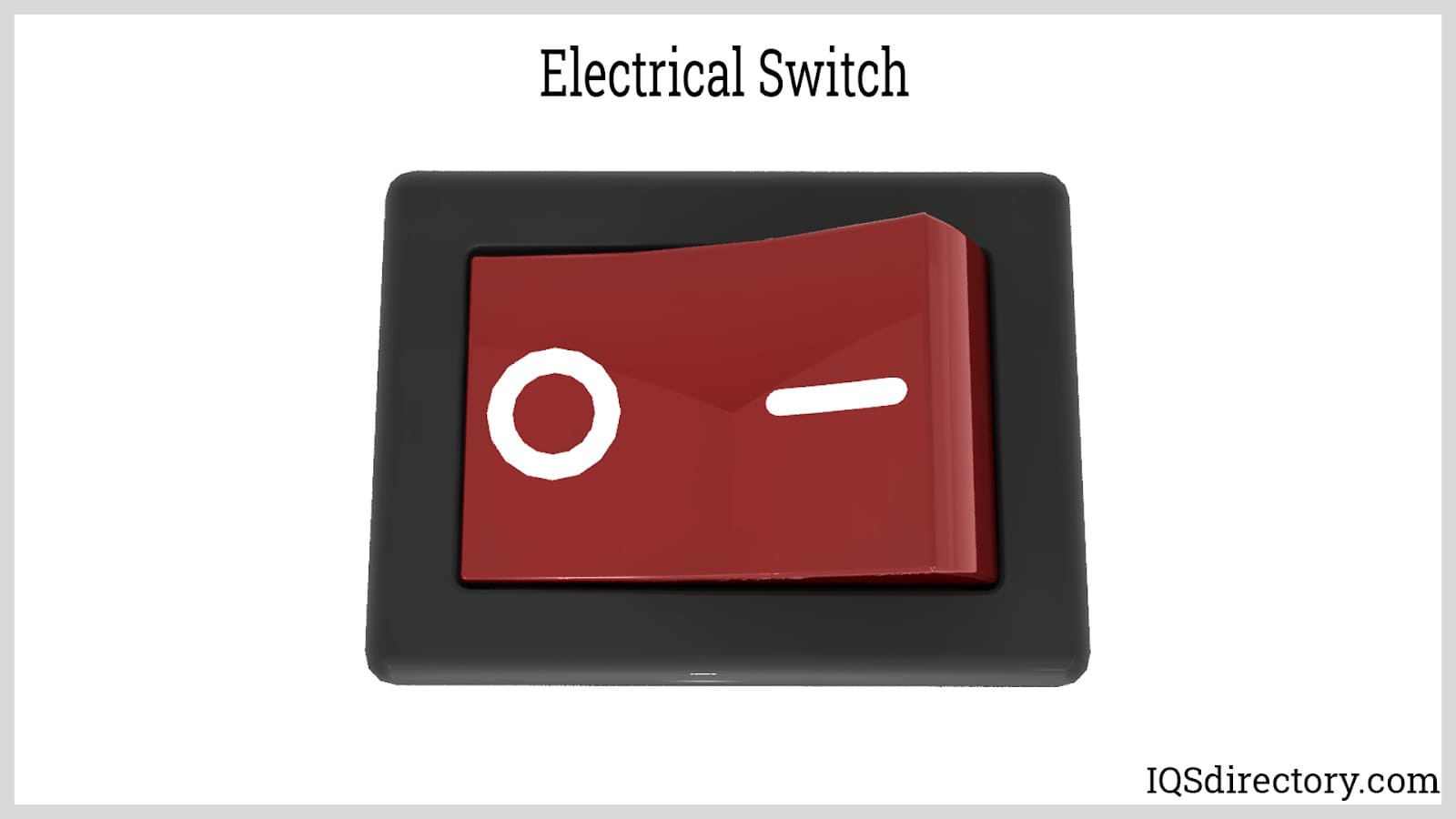Understanding the Relevance of Membrane Layer Switch Over in Modern Electronics
Membrane buttons are indispensable parts in modern-day digital gadgets. They use a blend of functionality and layout that boosts user interaction. Their lightweight and resilient nature makes them suitable for numerous applications. As markets progress, the demand for personalization and advanced features expands. Comprehending how membrane layer switches over contribute to innovation discloses their relevance fit the future of electronics. What exists in advance for this technology?
The Basics of Membrane Layer Switch Innovation
Although frequently neglected, membrane layer switch modern technology plays a crucial duty in the modern electronic devices landscape - membrane switch. These gadgets, made up of several layers, act as customer interfaces for various digital products, varying from household home appliances to clinical devices. A typical membrane button contains a visuals overlay, a spacer layer, and a circuit layer, which are thoroughly assembled to produce a functional interface.When stress is put on the overlay, the circuit layer is completed, permitting signals to be transferred to the tool. This technology is understood for its versatility, making it possible for customization in style, form, and functionality to fulfill particular user requirements. In addition, membrane layer switches are slim and light-weight, making them suitable for applications where area is a costs. Their longevity and resistance to environmental variables better enhance their allure, guaranteeing they can withstand severe conditions while keeping capability. On the whole, membrane layer button modern technology is integral to creating efficient and straightforward electronic gadgets

Secret Advantages of Membrane Switches Over
Membrane layer changes offer a number of crucial advantages that make them a preferred selection in various electronic applications. Their layout enables a small kind aspect, allowing manufacturers to develop light-weight and sleek gadgets. Furthermore, membrane layer switches are immune to dust, dampness, and chemicals, which improves their resilience and longevity popular environments. The responsive feedback given by these buttons can enhance customer experience, making them very easy and intuitive to operate.Furthermore, membrane layer switches can be tailored with diverse graphics and shades, enabling for distinct branding chances. The production process is usually cost-efficient, especially for high-volume manufacturing, as it lowers setting up time and simplifies style. Ultimately, membrane switches need marginal maintenance, adding to lower total operational expenses. These advantages emphasize their growing appeal in modern-day electronics, where dependability and straightforward user interfaces are necessary.

Applications Across Different Industries
The versatility of membrane layer changes enables their widespread fostering across numerous sectors. In the clinical field, they are generally utilized in diagnostic equipment and person tracking systems, offering a durable interface immune to impurities. The vehicle sector utilizes membrane switches for control panel controls, boosting user experience with smooth styles that withstand rough problems. In customer electronics, they function as control panels for gadgets such as microwaves and coffee manufacturers, supplying an user-friendly user interface that is easy to tidy. The aerospace industry uses membrane switches in cockpit controls, where reliability and area efficiency are critical. Additionally, the industrial field leverages these switches in equipment and control systems to guarantee durable procedure sought after atmospheres. This broad series of applications emphasizes the adaptability of membrane buttons, making them essential elements in boosting capability and customer interaction throughout varied technological landscapes.
Personalization and Style Flexibility

Future Patterns in Membrane Layer Switch Over Development
Emerging trends in membrane layer switch advancement suggest a growing emphasis on boosted performance and assimilation with wise innovations. As consumer need for much more advanced electronic devices boosts, suppliers are concentrating on developing membrane layer switches that not just serve fundamental operational duties however additionally incorporate functions like touch sensitivity, backlighting, and haptic feedback.Furthermore, advancements in products are anticipated to boost sturdiness and ecological resistance, making membrane layer switches over ideal for varied applications in markets such as healthcare, auto, and customer electronics. The assimilation of capacitive touch innovation is likely to come to be a lot more common, allowing for sleeker layouts and boosted customer interfaces. membrane switch.Additionally, the surge of the Internet of Points (IoT) is prompting the development of membrane layer switches that can connect wirelessly with various other gadgets, enhancing interconnectivity. On the whole, the future of membrane button innovation appears encouraging, driven by advancement and the pursuit of straightforward solutions
Regularly Asked Questions
Just How Do Membrane Layer Changes Contrast to Conventional Mechanical Buttons?
Membrane switches, being a lot more space-efficient and offering a smooth layout, comparison with traditional mechanical buttons that offer tactile comments. The previous typically include customizable graphics, while the last generally assure durability and integrity in various applications.
What Materials Are Generally Used in Membrane Change Manufacturing?
Membrane switches are generally generated using materials such as polyester, polycarbonate, and printed conductive inks. These materials give flexibility, toughness, and responsiveness, making them ideal for various applications in electronic devices and individual interfaces.
Can Membrane Changes Be Fixed or Recycled?
Membrane buttons can often be fixed, specifically if minor problems occur, such as sticky failure or surface area damages. Nevertheless, total reuse is usually limited as a result of put on and prospective deterioration of materials gradually.
Exactly How Do Environmental Variables Influence Membrane Switch Over Performance?
Ecological aspects, such as exposure, temperature level, and moisture to chemicals, greatly affect membrane layer button performance. Severe conditions can lead to degradation, influencing responsiveness and longevity, see this here inevitably compromising the performance of the device in numerous applications.
What Is the Typical Life Expectancy of a Membrane Layer Switch?
The regular lifespan of a membrane layer button typically varies from 1 to 5 million actuations, depending on aspects such as use regularity, environmental problems, and the products used in manufacturing, influencing sturdiness and efficiency longevity. A common membrane button is composed of a graphic overlay, a spacer layer, and a circuit layer, which are thoroughly put together to create a practical interface - membrane switch.When stress is applied to the overlay, the circuit layer is completed, allowing signals to be transferred to the device. The tactile responses offered by these buttons can enhance customer experience, making them easy and user-friendly to operate.Furthermore, membrane switches can be personalized with varied graphics and colors, permitting for unique branding opportunities. As consumer demand for a lot more innovative digital tools see here rises, makers are concentrating on developing membrane layer switches over that not only offer standard functional duties however likewise include attributes like touch level of sensitivity, backlighting, and haptic feedback.Furthermore, innovations in materials are anticipated to enhance toughness and ecological resistance, making membrane layer changes ideal for diverse applications in industries such as medical care, auto, and customer electronic devices. The integration of capacitive touch modern technology is likely to end up being more widespread, permitting for sleeker layouts and boosted customer interfaces.Additionally, the increase of the Internet of Things (IoT) is triggering the advancement of membrane switches over that can interact wirelessly with various other devices, improving interconnectivity. Membrane buttons, great post to read being more space-efficient and providing a sleek layout, comparison with conventional mechanical switches that give tactile responses
Comments on “Exploring membrane switch applications in high-risk environments”